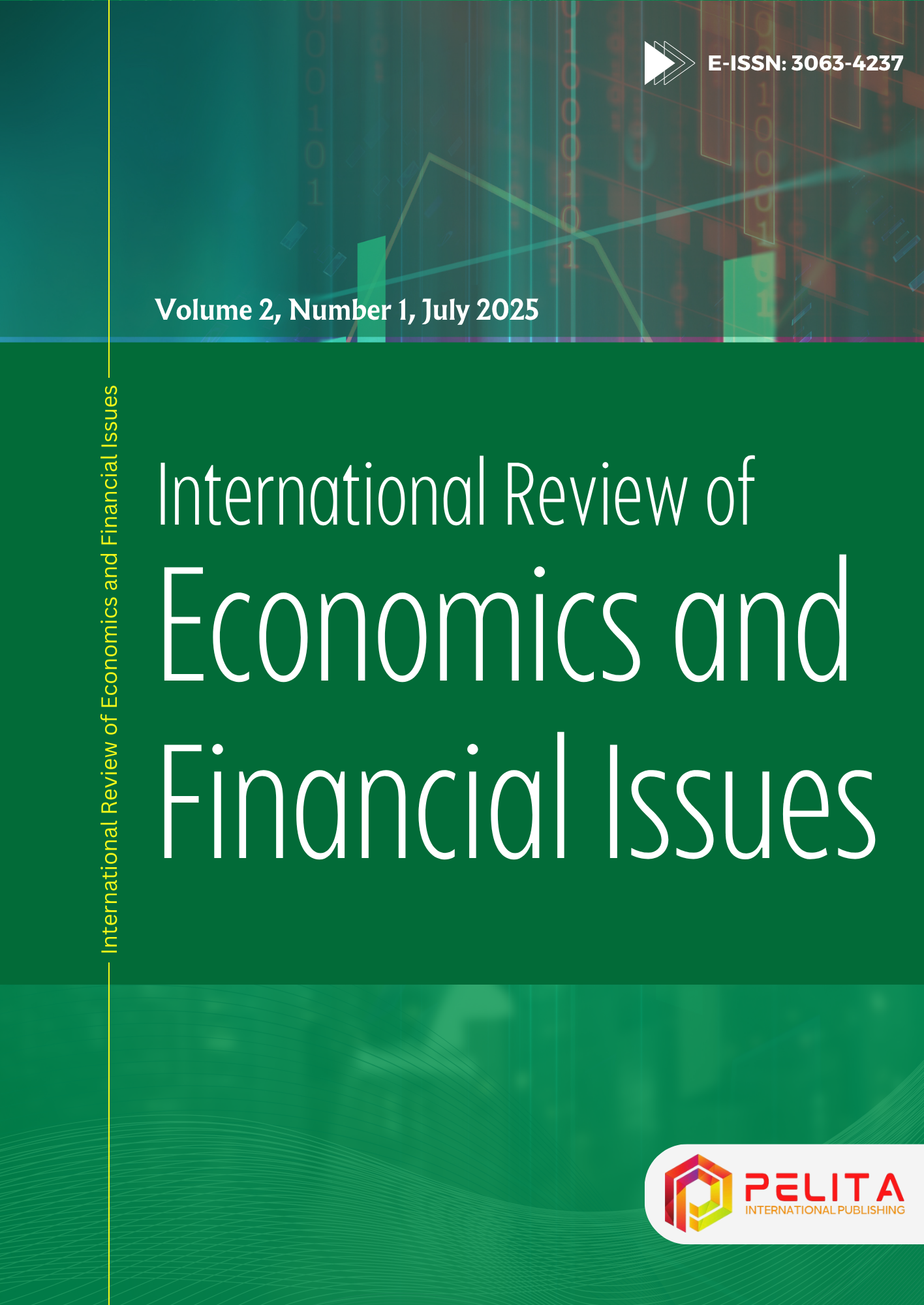An empirical study on welfare indicators pre-and post-2021 republic collapse in Afghanistan
DOI:
10.62941/irefi.v2i1.134Issue:
Vol. 2 No. 1 (2025): In ProgressKeywords:
community welfareResearch Article
Downloads
How to Cite
Downloads
Metrics
Abstract
This paper aims to analyze specific welfare indicators to assess the impact of the collapse of the Islamic Republic of Afghanistan, on the socio-economic conditions in the country. The political shift in 2021, which followed years of instability and conflict, culminated in a humanitarian crisis affecting millions. Through statistical analysis of welfare data pre- and post-collapse, this article demonstrates that the fall of the regime has led to increase of unemployment up to 40%, reduced purchasing power, a decline in the quality of basic services, decreased economic growth, a widening trade deficit, and a rise in poverty levels approaching 90%. Notably, our findings show an effect size of 0.49 and a z-score of 13.61 indicate a moderate to strong and statistically significant deterioration in overall welfare, suggesting that these changes are not merely random fluctuations but represent substantial declines in the quality of life for the Afghan nation. The available statistics reveal a concerning decline in public welfare over the past three years. Understanding these dynamics is crucial for formulating targeted interventions by both national and international stakeholders. This study emphasizes the urgent need for comprehensive planning and implementation of policies, including job creation programs, investment in economic infrastructure, and enhanced access to social services.
References
Abbasi, F. (2024). “A disaster for the foreseeable future.” In Human Rights Watch. https://www.hrw.org/report/2024/02/12/disaster-foreseeable-future/afghanistans-healthcare-crisis
Ahmadzai, M. W. (2015). Food security and rural poverty in Afghanistan. Academia. https://www.academia.edu/101179072/Food_security_and_rural_poverty_in_Afghanistan
Alemi, Q., Panter-Brick, C., Oriya, S., Ahmady, M., Alimi, A. Q., Faiz, H., Hakim, N., Sami Hashemi, S. A., Manaly, M. A., Naseri, R., Parwiz, K., Sadat, S. J., Sharifi, M. Z., Shinwari, Z., Ahmadi, S. J., Amin, R., Azimi, S., Hewad, A., Musavi, Z., Siddiqi, A. M., … Ventevogel, P. (2023). Afghan mental health and psychosocial well-being: thematic review of four decades of research and interventions. BJPsych open, 9(4), e125. https://doi.org/10.1192/bjo.2023.502
Amnesty International. (2023, May 25). Afghanistan: The Taliban’s war on women: The crime against humanity of gender persecution in Afghanistan (Index No. ASA 11/6789/2023). https://www.amnesty.org/en/documents/asa11/6789/2023/en/
Arib, E. (2022). Policy, SDGs and fighting corruption for the people: A civil society report on Afghanistan's Sustainable Development Goals. Transparency International. https://murdoch.primo.exlibrisgroup.com/discovery/fulldisplay/alma991005538420307891/61MUN_INST:61MU
Bak, M., & Kukutschka, R. M. B. (2019). Corruption in Afghanistan and the role of development assistance. Transparency International. http://www.jstor.org/stable/resrep20486
Bartlett, J.E., Kotrlik, J.W. and Higgins, C.C. (2001) Organizational Research: Determining Appropriate Sample Size in Survey Research. Information Technology, Learning, and Performance Journal, 19, 43-50.
Bjelica, J. (2020, March 9). Afghanistan’s Anti-Corruption Institutions: Too many, and with too few results. Afghanistan Analysts Network - English. https://www.afghanistan-analysts.org/en/reports/economy-development-environment/afghanistan-anti-corruption-institutions-too-many-and-with-too-few-results/
Byrd, W. (2022, August 8). One year later, Taliban unable to reverse Afghanistan's economic decline. United States Institute of Peace. Archived at https://web.archive.org/web/20220809043403/https://www.usip.org/publications/2022/08/one-year-later-taliban-unable-reverse-afghanistans-economic-decline
Cochran, W. G. (1977). Sampling Techniques (3rd ed.). John Wiley & Sons.
Crisis Group. (2023, March 1). Taliban restrictions on women’s rights deepen Afghanistan’s crisis. International Crisis Group. https://www.crisisgroup.org/asia/south-asia/afghanistan/329-taliban-restrictions-womens-rights-deepen-afghanistans-crisis
Dewan, I., & Rao, B. P. (2005). Wilcoxon-signed rank test for associated sequences. Statistics & Probability Letters, 71(2), 131-142. https://doi.org/10.1016/j.spl.2004.10.034.
Dynan, K., & Sheiner, L. (2018, August 24). GDP as a measure of economic well-being. Brookings. https://www.brookings.edu/research/gdp-as-a-measure-of-economic-well-being/
Freimann, A. (2016). Limitations of the GDP as a measure of progress and well-being. Ekonomski vjesnik, 29(1), 257-272. https://www.researchgate.net/publication/304625821_Limitations_of_the_GDP_as_a_measure_of_progress_and_well-being
Human Rights Watch. (2023). “You Have No Right to Complain”: Education, Healthcare, and Livelihoods Crisis in Afghanistan Under the Taliban. https://www.hrw.org/report/2020/06/30/you-have-no-right-complain/education-social-restrictions-and-justice-taliban-held
Integrated Food Security Phase Classification (IPC). (2022). Acute Food Insecurity Snapshot. https://www.ipcinfo.org/fileadmin/user_upload/ipcinfo/docs/IPC_Afghanistan_AcuteFoodInsec_2022MarNov_snapshot.pdf
International Labour Organization (ILO) (2024, July 23). Women bear brunt of Afghanistan job losses. https://www.ilo.org/resource/news/women-bear-brunt-afghanistan-job-losses
International Rescue Committee. (2022, May 19). In Afghanistan, the entire population is being pushed into poverty. https://www.rescue.org/article/afghanistan-entire-population-pushed-poverty
Khan, M. F., Ali, S., & Khan, H. U. (2021). Ethnic conflict and the political instability in Afghanistan. Pakistan Journal of International Affairs, 4(2). https://www.researchgate.net/publication/354207466_Ethnic_Conflict_and_the_Political_Instability_in_Afghanistan
Martínez, L. R. (2022). How much should we trust the dictator’s GDP growth estimates? Journal of Political Economy, 130(10), 2731–2769. https://doi.org/10.1086/720458
Mitu, N. E. (2024). Limits of the relevance of the GDP indicator. SSRN Electronic Journal. https://doi.org/10.2139/ssrn.4718013
Mohammed, A. S., Graham, E., & Dary, S. K. (2022). Rising expectations and dying hopes: Local perceptions of oil and gas extraction in Ghana. Energy Research & Social Science, 88, 102529. https://doi.org/10.1016/j.erss.2022.102529.
OECD. (2020, September). Anti-corruption reforms in Eastern Europe and Central Asia. Organisation for Economic Co-operation and Development. https://www.oecd.org/en/publications/2020/09/anti-corruption-reforms-in-eastern-europe-and-central-asia_b433c079.html
Pita, A., & Afzal, M. (2022, August 30). What’s happening in Afghanistan one year after the U.S. withdrawal? Brookings. https://www.brookings.edu/articles/whats-happening-in-afghanistan-one-year-after-the-u-s-withdrawal/
Roberson, P. K., Shema, S. J., Mundfrom, D. J., & Holmes, T. M. (1995). Analysis of paired Likert data: how to evaluate change and preference questions. Family medicine, 27(10), 671-675.
Rubin, B. R. (1995). The Fragmentation of Afghanistan: State Formation and Collapse in the International System, Second Edition. Yale University Press. http://www.jstor.org/stable/j.ctt32bjh8
Scheff, S. W. (2016). Fundamental statistical principles for the neurobiologist: A survival guide. Academic Press.
Siegel, S. (1956). Nonparametric statistics for the behavorial sciences. McGraw-Hill.
Snider, J. (2022). Taliban 2.0 and US national security policy in Afghanistan. Journal of Asian Security and International Affairs, 9(3), 402–423. https://doi.org/10.1177/23477970221129905
Transparency International. (2022, January 25). 2021 Corruption Perceptions Index - Press release: Regional overview - Asia Pacific. https://www.transparency.org/en/press/2021-corruption-perceptions-index-press-release-regional-asia-pacific
UNDP. (2023). Afghanistan Socio-Economic Outlook 2023. https://www.undp.org/afghanistan/publications/afghanistan-socio-economic-outlook-2023
UNHCR. (2023). Afghanistan situation: Global report 2023. United Nations High Commissioner for Refugees. https://reporting.unhcr.org/afghanistan-situation-global-report-2023
UNICEF. (2022). Afghanistan Humanitarian Situation Report. https://www.unicef.org/documents/afghanistan-humanitarian-situation-report-may-2022
Wilcoxon, F., Diamantina, S. S., Demolin Leite, G. L., Souza Silva, F. W., Barbosa, J., Azevedo, A. M., Sampaio, R. A., Zanuncio, J. C., Cowen, A. S., Fang, X., Sauter, D., Keltner, D., Kysar-Moon, A., Gross, A., Lin, Y., Weber, P. K., Pett-Ridge, J., Silver, A. L., Manley, K., . . . Elsayyad, M. (1945). Individual Comparisons by Ranking Methods. Biometrics Bulletin, 1(6), 80-83. https://doi.org/3001968.
World Bank Group. (2022). Afghanistan Economic Monitor. In World Bank. https://www.worldbank.org/en/country/afghanistan/publication/afghanistan-economic-monitors
World Bank Group. (2024). Afghanistan Economic Monitor. In World Bank. https://www.worldbank.org/en/country/afghanistan/publication/afghanistan-economic-monitors
World Bank. (2018). Afghanistan Poverty Status Update: Progress at Risk. https://documents1.worldbank.org/curated/en/667181493794491292/pdf/114741-WP-v1-P159553-PUBLIC.pdf
World Bank. (2022). Afghanistan Economic Monitor: Impact of Political Crisis on Employment and Welfare. https://www.worldbank.org/en/country/afghanistan/publication/afghanistan-economic-monitors
World Bank. (2022). Afghanistan economic update. World Bank Group. http://documents.worldbank.org/curated/en/852081468184759655
World Food Programme (WFP). (2022). Afghanistan Food Security Update. https://reliefweb.int/report/afghanistan/afghanistan-food-security-update-december-2022
Xia, Y. (2020). Correlation and association analyses in microbiome study integrating multiomics in health and disease. Progress in molecular biology and translational science, 171, 309-491. https://doi.org/10.1016/bs.pmbts.2020.04.003
Author Biographies
Shah Mir Mowahed, Applied Economics, School of Economics and Trade, Hunan University, Changsha, China
Mohammad Wais Sharif Zada, Applied Economics, School of Economics and Trade, Hunan University, Changsha, China
Abdul Ahmad Pooya, Applied Economics, School of Economics and Trade, Hunan University, Changsha, China
License
Copyright (c) 2025 Shah Mir Mowahed, Mohammad Wais Sharif Zada, Abdul Ahmad Pooya

This work is licensed under a Creative Commons Attribution 4.0 International License.










